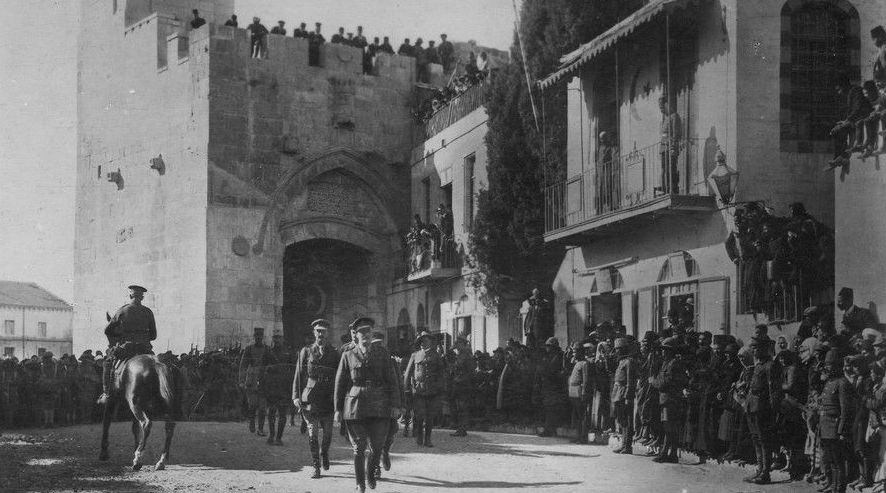Millet Sistemi ve Rum Toplulukları
Bölüm 432
Sunucu: Önder Eren Akgül
Ottoman History Podcast’in bu bölümünde Ayşe Ozil ile geç Osmanlı döneminde millet sisteminin ne ifade ettiğini, Rum cemaatini, cemaat kavramının kendisini, Rum topluluklarının devlet ile ilişkisini ve bu ilişkinin ondokuzuncu yüzyıl ortalarından itibaren ne tür değişimler geçirdiğini konuştuk.
Stream via SoundCloud
KATILIMCI BİOGRAFİLERİ
 |
Ayşe Ozil Sabancı Üniversitesi Sanat ve Sosyal Bilimler Fakültesi öğretim üyesidir. Boğaziçi Üniversitesi Siyaset Bilimi ve Uluslararası İlişkiler Bölümü’nden mezun olduktan sonra aynı üniversitenin Tarih Bölümü’nden yüksek lisans, Londra Üniversitesi Birkbeck College’dan doktora derecesini almıştır. Princeton ve Leiden Üniversitelerinde doktora sonrası araştırmalar yapan Ozil’in çalışma alanları 19. yüzyıl Osmanlı toplumsal tarihi, Rum toplulukları, modernleşme, milliyetçilik ve şehirleşmedir. |
 |
Önder Eren Akgül Georgetown University Tarih bölümünde doktora öğrencisi. Doktora tezini İzmir ve kırsal artalanının 19. yüzyıl boyunca ve 20. yüzyıl başında geçirdiği sosyal ve ekolojik dönüşüm üzerine hazırlıyor. |
YAPIM VE YAYIN
Bölüm No: 432
Yayınlanma Tarihi: 8 Kasım 2019
Kayıt Yeri: İstanbul
Ses Editörü: Önder Eren Akgül
Müzik: Istanbul'dan Ayva Gelir Nar Gelir - Azize Tozem and Sari Recep
Görseller ve Kaynakça Ayşe Ozil'in Müsaadesiyle
Yayınlanma Tarihi: 8 Kasım 2019
Kayıt Yeri: İstanbul
Ses Editörü: Önder Eren Akgül
Müzik: Istanbul'dan Ayva Gelir Nar Gelir - Azize Tozem and Sari Recep
Görseller ve Kaynakça Ayşe Ozil'in Müsaadesiyle
GÖRSELLER
 |
|
Bandırma Rum Okulu’nda Kız İzciler, 1915-16 (Kaynak: Küçük Asya Araştırmaları Merkezi Arşivi)
|
 |
|
Tirilye Rum Okulu’nun bugünkü görünümü (Kaynak: Ayşe Ozil)
|
 |
|
Ayvalık’ın ilerigelenleri Rum yazar ve ressam Fotis Kontoğlu ile birlikte (Kaynak: Küçük Asya Araştırmaları Merkezi Arşivi)
|
SEÇİLMİŞ KAYNAKÇA
Braude, B., “Foundation Myths of the Millet System,” Braude, B. ve Lewis, B. (ed.) Christians and Jews in the Ottoman Empire içinde, New York: Holmes and Meier Publishers, c. 1, 1982, s. 69-87.
Brubaker, R., Nationalism Reframed: Nationhood and the National Question in the New Europe, Cambridge: Cambridge University Press, 2004.
Clogg R., “The Greek Millet in the Ottoman Empire,” Braude, B. ve Lewis, B. (ed.), Christians and Jews in the Ottoman Empire içinde, New York: Holmes and Meier, 1982, 185-207.
Exertzoglou, H., Εθνική Ταυτότητα στην Κωνσταντινούπολη τον 19ο αιώνα [19. Yüzyıl İstanbul’unda Ulusal Kimlik], Atina: Nefeli, 1996.
Gondicas, D. ve Issawi, C. (ed.), Ottoman Greeks in the Age of Nationalism, Princeton: Darwin Press, 1999.
Greene, M. (ed.), Minorities in the Ottoman Empire, Princeton: Markus Wiener, 2005.
Kalfoglou, I., Ιστορική Γεωγραφία της Μικρασιατικής Χερσονήσου [Anadolu’nun Tarihsel Coğrafyası], Atina: Kentro Mikrasiatikon Spoudon, 2002 [ilk basım: Mikra Asia Kitasinin Tarihiye Tzagrafiasi, Dersaadet: Adelfoi Misailidai, 1899].
Kenanoğlu, M., Osmanlı Millet Sistemi: Mit ve Gerçek, İstanbul: Klasik, 2004.
Kleonomos, M. ve Papadopoulos, Ch., Βιθυνικά: Επίτομος Μονογραφία της Βιθυνίας και των Πόλεων αυτής [Bitinya ve Bitinya Şehirleri Üzerine Kısa bir Monografi], İstanbul, 1867.
Kostis, K., “Κοινότητες, Εκκλησία και Millet στις ‘Ελληνικές’ Περιοχές της Οθωμανικής Αυτοκρατορίας κατα την Περίοδο των Μεταρρυθμίσεων” [Osmanlı İmparatorluğu’nda Reform Çağında Rumların Yaşadığı Bölgelerde Etnik-Dini Topluluk, Kilise ve Millet] Mnimon, c. 13, 1991, s. 57-75.
Mağmumi Ş., Bir Osmanlı Doktorunun Anıları: Yüzyıl Önce Anadolu ve Suriye, İstanbul: Büke Yayınları, 2001.










Comments
Post a Comment
Due to an overwhelming amount of spam, we no longer read comments submitted to the blog.